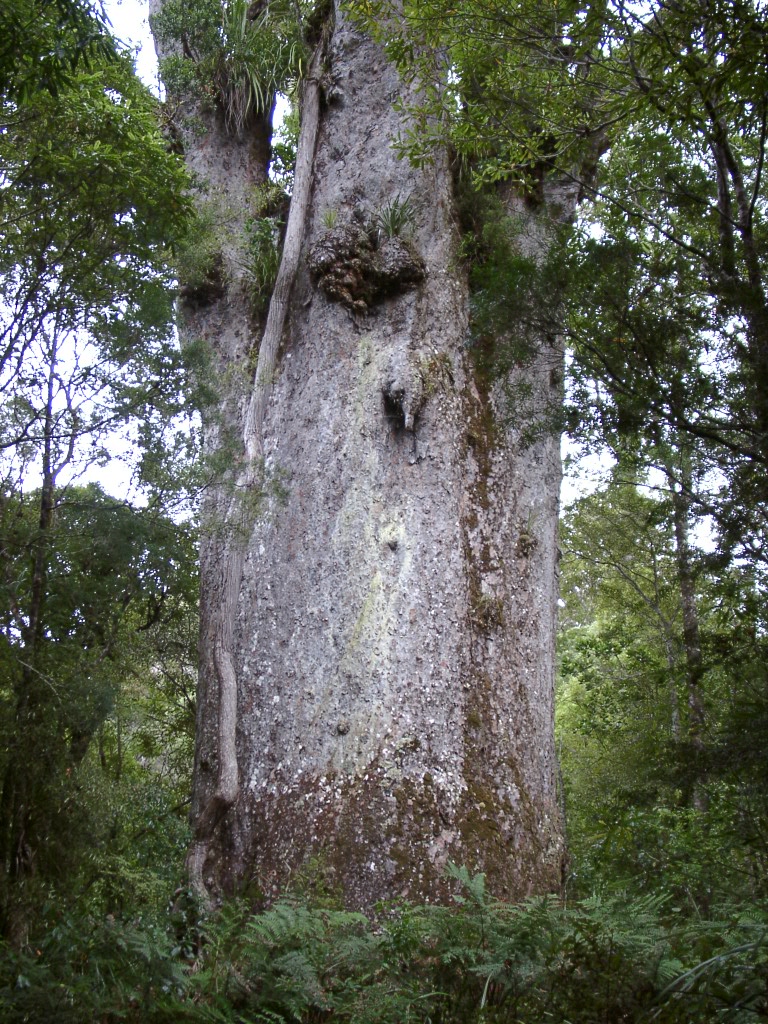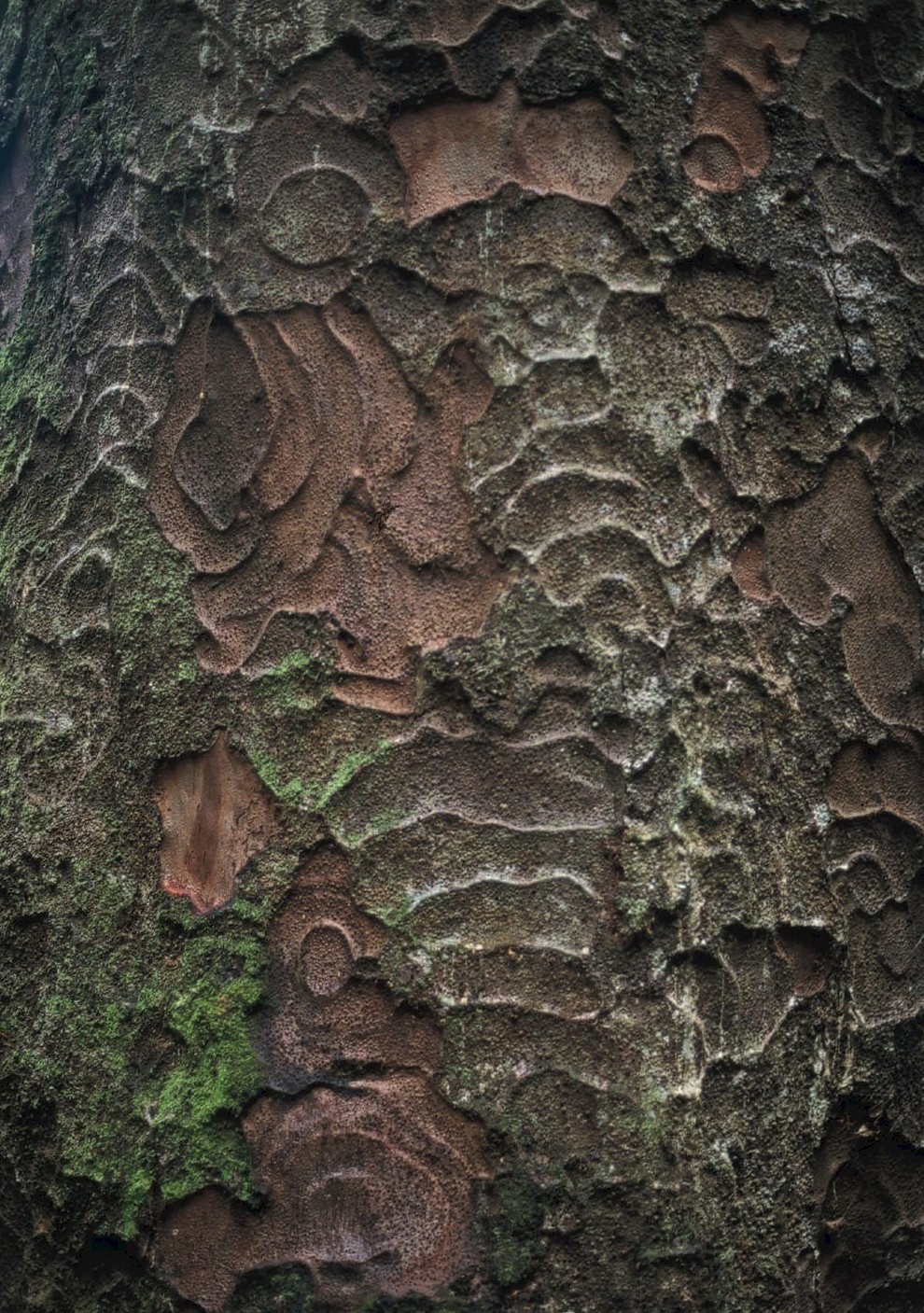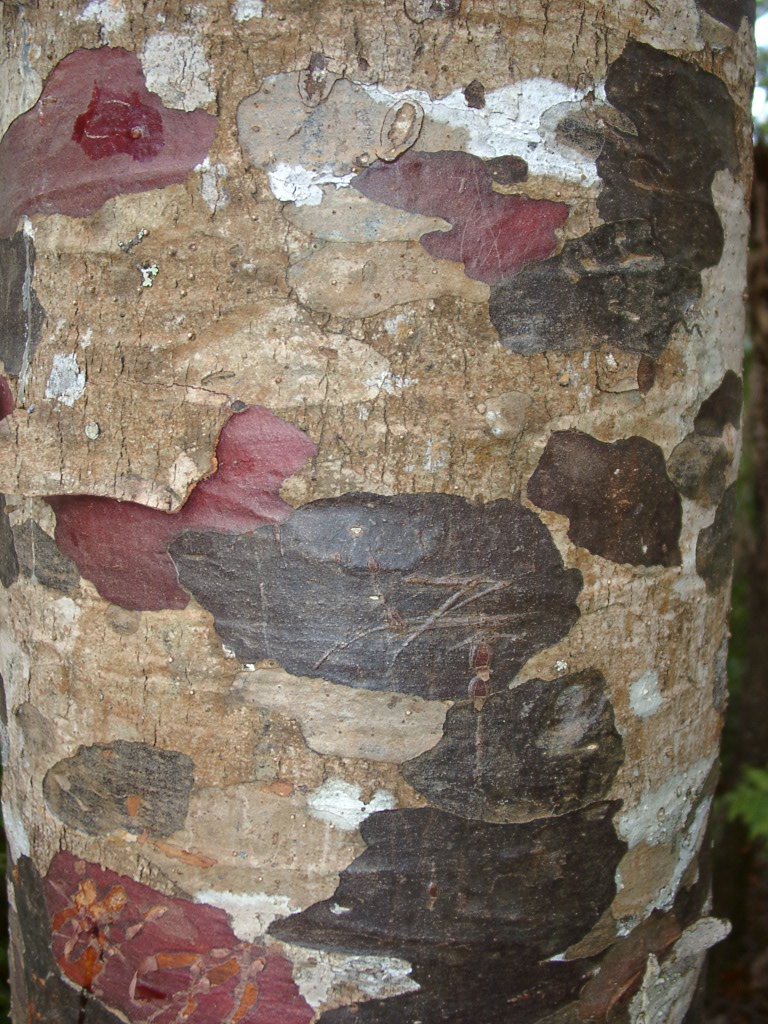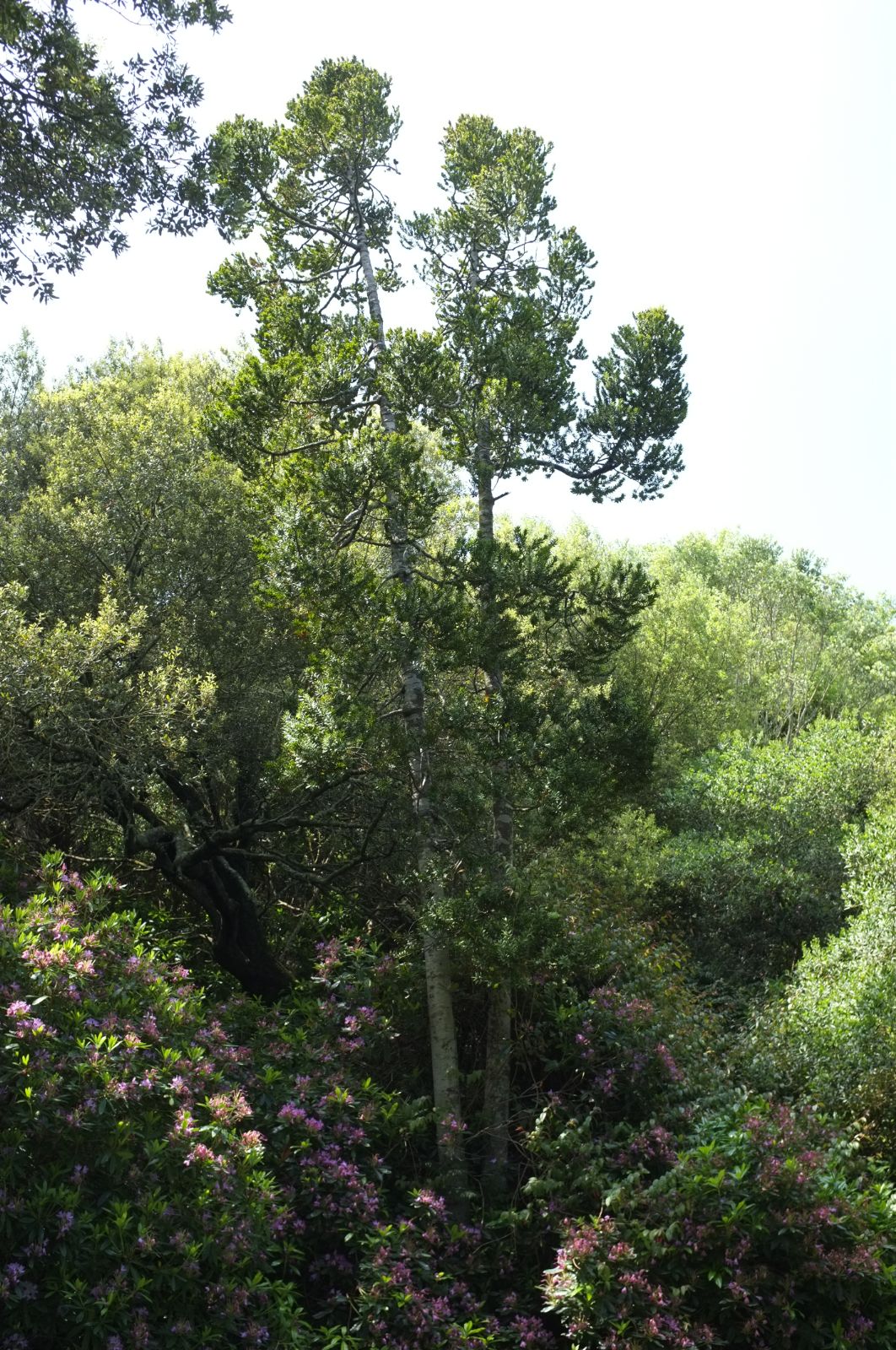Agathis australis
Credits
Article from New Trees by John Grimshaw & Ross Bayton
Recommended citation
'Agathis australis' from the website Trees and Shrubs Online (treesandshrubsonline.
Genus
Common Names
- Kauri
Other taxa in genus
Tree 30–40(–50 m), usually with a massive trunk, 3–7 m dbh in largest specimens, with a clear bole for 10–20 m, becoming hollow with age. Bark bluish grey, falling in large thick flakes. When young the crown is narrow, conical and unbranched, but the tree develops massive spreading branches with age. Leaves sessile, alternate to subopposite, larger when juvenile, 5–10 cm long, adult leaves 1.5–6 1.0–1.5 cm, glaucous to mid-green. Male strobili stout, 2–5 1 cm. Female cones 6 6–8 cm wide, glaucous-green, scales 1.8 cm long with short mucronate umbo. Seeds mature 19–20 months after pollination and are compressed ovoid in shape, with a wing. Whitmore 1980. Distribution NEW ZEALAND: northern peninsula of North Is. Habitat Warm temperate lowland forest with subtropical affinities. USDA Hardiness Zone 9–10. Conservation status Lower Risk. Illustration Van Gelderen & van Hoey Smith 1996, Marinelli 2004; NT123. Cross-reference K48.
Agathis australis is one of those species that is grown in the mildest parts of our area, for its inherent interest as an important and magnificent tree in its native New Zealand, but has never reached its potential here. It first reached Europe in 1823, with a further importation to Kew in 1838 (Dallimore et al. 1966). Successive generations have tried to grow it, and there are sparse records of trees around the western fringes of the British Isles. The largest known to have grown in the northern hemisphere was a specimen at Tresco Abbey, Isles of Scilly, that attained 19.5 m, dbh 31 cm, while the current surviving champion is one of 16 m at Ilnacullin, Co. Cork, a garden where four specimens over 10 m were measured in 2002, by Aubrey Fennell (Johnson 2007). There are attractive, fruiting specimens of about 8 m at Mount Usher. A slow-growing specimen at Tregrehan recorded to be only 4 m after 40 years in 1931 (Dallimore et al. 1966) has disappeared and been replaced by a group of young trees that appear (so far) to be doing better than their predecessor. On these specimens the new growth is brownish bronze. Agathis australis will, it seems certain, remain a curiosity for those in our mildest areas.




